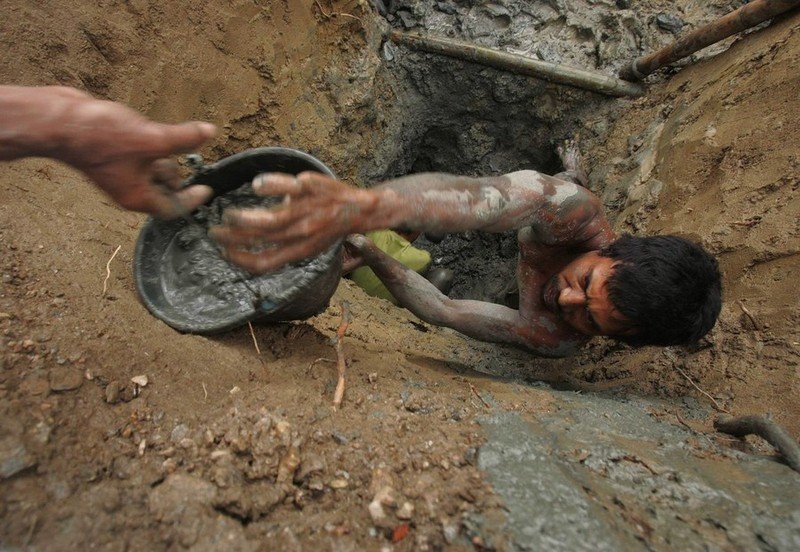|
|
Gold Mining In Indonesia
|
A number of people have claimed to be able to economically recover gold from sea water, but so far they have all been either mistaken or crooks. A so-called reverend, Prescott Jernegan ran a gold-from-seawater swindle in the United States in the 1890s. A British fraudster ran the same scam in England in the early 1900s. Fritz Haber (the German inventor of the Haber process) did research on the extraction of gold from sea water in an effort to help pay Germany's reparations following World War I. Based on the published values of 2 to 64 ppb of gold in seawater a commercially successful extraction seemed possible. After analysis of 4000 water samples yielding an average of 0.004 ppb it became clear that the extraction would not be possible and he stopped the project. No commercially viable mechanism for performing gold extraction from sea water has yet been identified. Gold synthesis is not economically viable and is unlikely to become so in the foreseeable future
Production
Gold extraction is most economical in large, easily mined deposits. Ore grades as little as 0.5 mg/kg (0.5 parts per million, ppm) can be economical. Typical ore grades in open-pit mines are 1–5 mg/kg (1–5 ppm); ore grades in underground or hard rock mines are usually at least 3 mg/kg (3 ppm). Because ore grades of 30 mg/kg (30 ppm) are usually needed before gold is visible to the naked eye, in most gold mines the gold is invisible.
|
|









